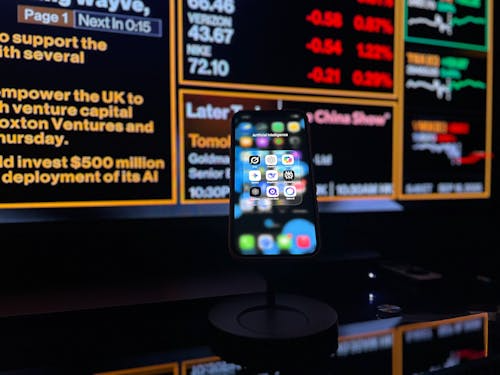The Personalisation Power Play: Why Tailored Communication Is King in the Digital Age
- Angel Francesca
- Feb 13
- 4 min read
In today's digital world, where consumers are bombarded with a constant barrage of information and generic marketing messages, personalisation has emerged as the key to cutting through the noise and forging meaningful connections. By tailoring your communication to the unique needs, interests, and preferences of your audience, you can unlock a deeper level of engagement, build stronger relationships, and drive impactful results.

This blog post explores the transformative power of personalisation in marketing, delves into real-world examples of brands excelling in this arena, and provides actionable strategies to elevate your communication and create truly resonant experiences for your customers.
Why Personalisation Matters: Beyond the Buzzword
Personalisation is more than just inserting a customer's name into an email; it's about creating a tailored experience that makes them feel understood, valued, and appreciated. Here's why it's crucial in today's competitive landscape:
Enhancing the Customer Experience: Personalised communication creates a more positive and enjoyable experience for your audience. When customers feel like you're speaking directly to them, addressing their specific needs and interests, they're more likely to engage with your brand and develop a sense of loyalty. Amazon, the e-commerce giant, exemplifies this with its sophisticated recommendation engine, which suggests products based on past purchases, browsing history, and individual preferences.
Driving Engagement and Conversions: Tailored messages are more likely to capture attention and spark interest, leading to higher open rates, click-through rates, and ultimately, conversions. Whether it's encouraging a purchase, a sign-up, or a download, personalisation can nudge your audience towards the desired action. Netflix, for example, uses personalised recommendations to keep users engaged and subscribed to its streaming service.
Building Stronger Brand Loyalty: Personalisation fosters a sense of connection and loyalty. When customers feel valued and understood, they're more likely to return to your brand and become repeat customers. Spotify's personalised playlists, curated based on individual listening habits and preferences, create a unique and enjoyable experience that keeps users coming back for more.
Gaining Valuable Insights: Personalisation data provides invaluable insights into customer behaviour and preferences. By tracking how customers interact with your personalised messages and offers, you can gain a deeper understanding of their needs and tailor your marketing strategies accordingly.
Personalisation in Practice: Real-World Examples
Amazon: Uses sophisticated algorithms to recommend products based on individual browsing history, purchase behaviour, and preferences, creating a highly personalised shopping experience.
Netflix: Keeps users engaged with personalised movie and TV show recommendations based on viewing history, ratings, and other factors.
Spotify: Creates personalised playlists based on individual listening habits and preferences, enhancing user satisfaction and driving engagement.
HubSpot: Uses dynamic content in its email marketing campaigns, tailoring resources and offers based on subscribers' previous interactions with its content.
Birchbox: Personalises its email marketing by sending tailored product recommendations based on customers' beauty profiles, enhancing the customer experience and driving conversions.
Mastering the Art of Personalisation: Actionable Strategies
Collect and Analyse Data: The foundation of effective personalisation is data. Utilise analytics tools, CRM systems, and social media insights to gather information about your audience's demographics, behaviours, preferences, and interests.
Segment Your Audience: Group your audience into distinct segments based on shared characteristics, such as demographics, interests, or purchase history. This allows you to tailor your messages and offers to specific groups, increasing relevance and engagement. Spotify's personalised playlists, like "Discover Weekly," exemplify this approach, catering to individual music tastes and preferences.
Create Dynamic Content: Utilise dynamic content that adapts to individual user data and preferences. This creates a more personalised and engaging experience, as the content evolves with the user's interests. HubSpot's use of dynamic content in its email marketing, where resources and offers are tailored based on subscriber interactions, demonstrates this strategy in action.
Leverage Personalised Email Marketing: Personalise your email subject lines, greetings, and content based on user data. Use behavioural triggers to send targeted emails, such as abandoned cart reminders or product recommendations.
Implement Retargeting Campaigns: Display personalised ads to users who have previously interacted with your brand. Remind them of products they viewed or offer new recommendations based on their interests to encourage them to return and complete a purchase. Facebook Ads, with its robust targeting and retargeting capabilities, enables highly personalised ad campaigns.
Embrace Real-Time Personalisation: Deliver customised content and experiences based on real-time user behaviour. Use machine learning algorithms and real-time data to personalise website content, product recommendations, and even chatbot interactions.
Measure and Optimise: Track key metrics like open rates, click-through rates, conversion rates, and customer satisfaction to assess the effectiveness of your personalisation efforts. Conduct A/B testing to compare different approaches and refine your strategies based on data-driven insights.
The Future of Personalisation
As technology advances and our understanding of consumer behaviour deepens, the possibilities for personalisation will continue to expand. Artificial intelligence (AI) and machine learning will play an increasingly important role in delivering hyper-personalised experiences that anticipate and cater to individual needs and preferences.
Conclusion
Personalisation is no longer a luxury; it's an expectation. In today's digital landscape, consumers crave tailored experiences that make them feel valued and understood. By embracing the power of personalisation, collecting and analysing data, segmenting your audience, and creating dynamic content, you can elevate your communication, build stronger relationships with your customers, and drive meaningful results. The future of marketing is personal – embrace it and watch your brand thrive.
Call-to-Action
For anyone that wants any further guidance, ClickAcademy Asia is exactly what you need. Join our class in Singapore and enjoy up to 70% government funding. Our courses are also Skills Future Credit Claimable and UTAP, PSEA and SFEC approved. Find out more information and sign up here. (https://www.clickacademyasia.com/ecommerce-bootcamp)



Comments